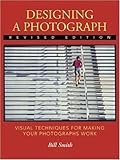Tao of Photography: Seeing Beyond Seeing by Philippe L. Gross, S.I. Shapiro applies Zen concepts to photography, interspersed with quotes and anecdotes from photographers that were well known for their visionary approach to what they took pictures of. Each section contains principles, applications of the principles and suggested assignments one can do to apply the principles.
The biggest takeaways from the book are the principles of Great Understanding and Little Understanding. The former refers to the unconscious and receptive nature of self. In photography this applies to composition and feeling of the subject. Little Understanding focuses on the small and immediate, this being tools and equipment available to a photographer. You need both in photography. Often, photographers focus solely on gear and techniques that they forget to seek out something larger in their work.
One way to seek something larger, to filter out unnecessary details, is to constantly discriminate to see the most basic, essential aspects of a photographic vision. Discriminating is not the same as being critical. You actively choose what is needed, not why it’s not needed.
I’d definitely recommend this book to understand a different creative approach. The quotes from famous photographers and personal stories are insightful.
